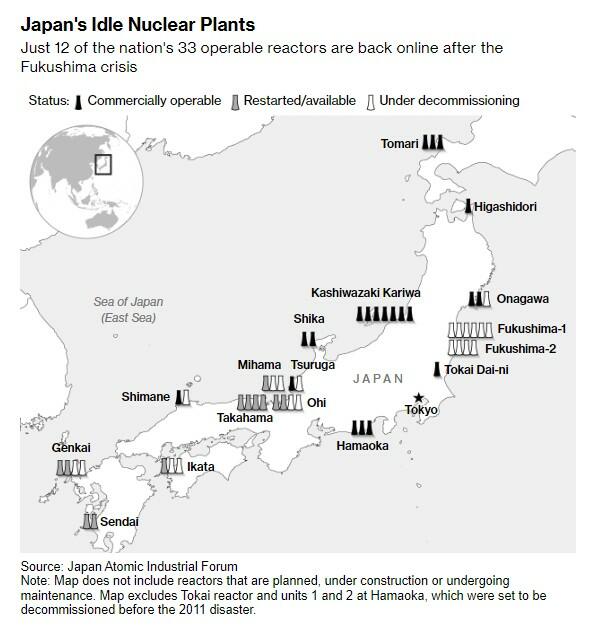We don't think it'll be long before nuclear power once again has a renaissance, as we've written about extensively. But for now, the world's largest nuclear power plant, the Kashiwazaki Kariwa Nuclear Power Plant in Japan, is sitting idle even as the world's energy needs continue to grow.
Bloomberg reported this week that the Kashiwazaki Kariwa Nuclear Power Plant, recognized by Guinness World Records for its potential 8.2 gigawatt output, stands idle despite once being central to Japan's goal of deriving 50% of its energy from nuclear power by 2030.
The facility, known as KK, shut down its seven reactors following the 2011 Fukushima disaster, which led to a national reevaluation of nuclear energy. Amidst current economic strategies targeting industries like semiconductor manufacturing and AI, debates are intensifying over whether KK and its operator, Tokyo Electric Power Co., should be given another opportunity.
Globally, nuclear power is witnessing a resurgence, as we have been covering here on Zero Hedge. In the U.S., AI-Jesus Sam Altman just had his small modular reactor company, Oklo, listed on NYSE. Around the world in places like France and Poland, the small modular reactor model could be what ushers nuclear back in, with some countries planning for adoption by 2030.
The International Atomic Energy Agency projects that nuclear power capacity could increase by 24% by 2030 and by 140% by 2050 from 2022 levels. Countries like China and India are expanding their nuclear programs, while even Saudi Arabia is exploring nuclear options with the U.S., reflecting a broader recommitment to nuclear energy as a vital resource.
Rafael Mariano Grossi, director general of the IAEA, said in March: “It’s very important for Japan to be able to count on Kashiwazaki Kariwa again. How many countries have that idle capacity? Many countries wish they just had it.”
Restarting or building new nuclear reactors in Japan is politically challenging. Nuclear power provides steady, carbon-free electricity, unlike the variable output from wind and solar. However, these facilities take over a decade to construct and produce long-lasting hazardous waste.
In 2017, two reactors at the KK plant were approved to restart by Japan's nuclear regulator, but a firm restart date has not been set due to lacking local government approval. The issue may be addressed in the upcoming regional assembly meeting in Niigata prefecture, where KK is located, Bloomberg noted.
Again, the restart will likely only occur when the obvious benefits outweigh the memories of past disaster at Fukushima.
This occurs as Prime Minister Fumio Kishida's administration reviews Japan's energy policy, a routine evaluation involving various stakeholders, which could reshape the country's nuclear energy goals amid criticisms of insufficient clean energy initiatives.
Amidst global energy uncertainties, highlighted by events in Ukraine and the Middle East, Japan's heavy reliance on imported energy for 70% of its electricity needs is problematic, especially with 21 nuclear reactors currently idle.
Tepco President Tomoaki Kobayakawa concluded, telling reporters in April: “We need to secure a stable electricity source for our customers — it’s important to have some source that’s not dependent on overseas fuel imports.”

No comments:
Post a Comment
Note: Only a member of this blog may post a comment.